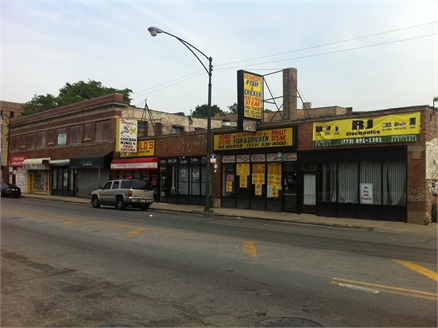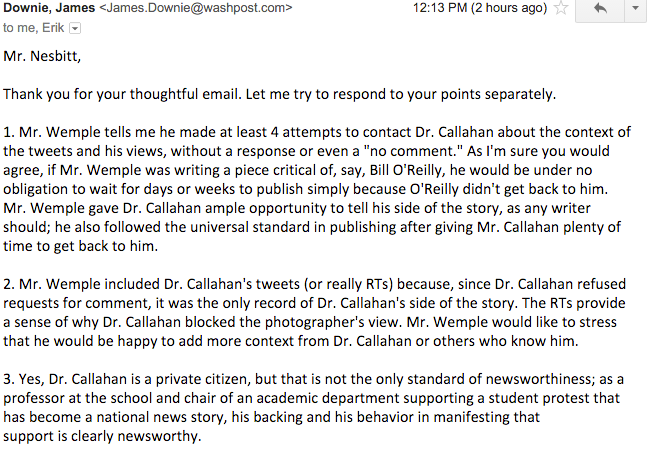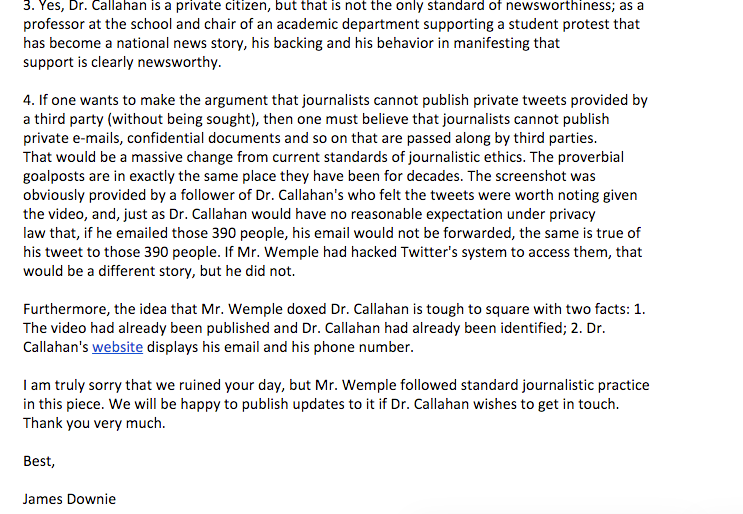(Riley is a disabled Black non-binary femme in his late 20s. He is a CS and math student in NYC with history in art, music and writing, looking to complete the holy quadrilateral of creative capability with tech skills.)
I’m really tired of the bullshit, so let’s get down to brass tacks. I’m Black. I’m trans. I think I know a little about race and transgender issues by now.
Caitlyn Jenner comes out as transgender, and people think that comments like “if Caitlyn Jenner can change genders, why can’t Rachel Dolezal change her race?”
It’s very simple.
Trans people have historically experienced violence.
Note that I have not said “men” or “women” have experienced violence. Specifically, transgender individuals have a long history of suffering, abuse, poverty and murder caused by their transitioning and transgender status.
In other words, the act of being trans itself is brings violence, not simply the act of being simply a man or a woman.
Caitlyn Jenner submitted herself to a lifetime of this violence when she came out. Statistics have shown that the rate of violence against trans people, and particularly trans women, is particularly high. Earlier this year, a number of Black and Latina trans women were violently murdered, a fact most didn’t even realize.
There is no history, tracking, record, or give-a-damn for murders of white people “race-transitioning” (a term I use tongue-in-cheek, here) to Black. I don’t even think there’s a single record of such. There are records of murder against Black people, but it is not the act of “race-transitioning” from white to Black that yields violence…not to mention there is not much of a record on this, if any at all.
Because the transitioning is the crux of the violence, being trans produces in a lowering of status in the eyes of the respective group one transitions to.
Trans men are not accepted wholly as men amongst cisgender men. Trans women are certainly not accepted wholly as women by cis women, they’re often barely considered human beings, considered rapists and pedophiles and are ostracized from women communities while being abused in male communities. However, cis women accept other cis women’s womanhood. Cis men accept other cis men’s manhood. Non-binary people, as you can see here, don’t really exist on this extreme scale at all, and have no real place.
Rachel Dolezal went from being a mediocre white woman with no identity to the prize of a Black community. As a group, we treasure light skin, pale eyes, blond hair, and the “biracial look”, which Rachel Dolezal pretended being. Black people more than anyone else are accepting, and those who are pale as chalk and 99.9% white can get in if they claim a bit of Blackness, making it easy for Dolezal to slip in past the doors and achieve a position in the Black community that trans women are not afforded in the woman community, nor trans men afforded in the man community. By penetrating Blackness like a virus, she attained a teaching position in Africana Studies, teaching numerous classes, she ripped away positions from Black people who have trouble getting the foot in the door at these universities. Black people, who are already overwhelmingly living in poverty were passed up by someone passing themselves off as light skin. She was exalted and held above the people she imitated, an experience that white people have no matter where they go in the world, no matter what culture they invade and overtake, whiteness and white features are loved and desired in PoC communities, assuring her seat of power amongst them.
But cis men and women are not passed over for jobs because trans people exist. Many trans women can’t find jobs at all. Trans men and trans women are not considered more attractive than cis men and women, respectively, and there is no desire, want or love of trans people in the cis community. They do not receive quarter there for having transitioned!
Race isn’t the same as gender.
On its face, it’s very easy to make some weak comparisons between trans-racial (a term actually used to describe adoption) and transgender, the idea of changing oneself overall, the thought processes that go into desperately wanting to be something people tell you that you aren’t. But once we get down to the specifics, we find differences that split the two wide apart.
Race is determined and experienced differently from gender.
Race, today, in the US in 2015? Is based on some bits and bobs and what your face looks like, the slope of your nose, the size of your lips, the shape of your eyes, the exact tone of your skin and curl pattern of your hair, your history and your ancestry. Many have come into their race as an identity, but there are plenty of situations wherein your race as determined by ancestry is completely different from your race as determined by your looks. Furthermore, it’s not only your looks, but how the racial class in power view and translate those looks.
In other words, race has history, but what determines one’s actual racial station is imposed. It’s not affected by how one acts or thinks, or how they adorn themselves. It comes from an external source. That is its history and has been since its inception.
Gender in a colonialist transphobic society may be based entirely on what bits you have when born (and if you don’t fit into two categories you are often violently altered until you do), but this is not the historical crux of gender, as this thing determined by a vapid declaration of one thing or another. One’s biological ancestral history has no effect on one’s gender; you are not your gender because your parents and grandparents were that gender. Gender is internal, and comes from the self, and that is its history, clearly displayed in a long line of various genders that have existed in PoC communities since the beginning of time. Thus, as it is internal, one’s own thoughts become relevant to one’s gender, and this simply isn’t true of race.
The respective communities are affected differently.
One suffers, the other experiences no difference at all.
What matters is the privilege dynamic. Cis women are not in any way deprived or damaged by Caitlyn Jenner or any other trans woman. The only person who stands to suffer is Caitlyn herself, whether or not the privileged community of cis women supports her, as a person who stands at the marginalized end of this stick.
But most of the people who don’t support Rachel Dolezal are those that Rachel Dolezal oppresses. People she’s stolen from. People her existences harms. Her presence does not leave the lives of actual Black women intact, it robs them of enrichment. When outed, white people defended her. They tried to call attention to potential mental illness, they told angry Black people to leave her alone and let her live. Black men who hate Black women defended her, Black men who oppress Black women and often demonize Black women. Non-Black people of color flew from their caves to come and tell Black women to “leave Rachel alone”, to “let her be what she wants”, and tried to assert their own definition of Blackness on the people who live its reality!
The oppression that Black women already face was pronounced by Rachel Dolezal. Increased. Once more, pro-injustice from sites-that-shall-not-be-named came to renew and refresh their abuse of Black women on social media.
This did not happen to cis women when Caitlyn Jenner came out.
Rachel Dolezal was happily welcomed into a community based on recreating a background that didn’t exist. Her white features earned her spaces that were meant for Black women, a group of people she oppresses. In addition, she has tried to exercise that power against Black women by announcing that she doesn’t believe they should be given a platform to speak if they don’t buy her story. She dresses in a marginalized costume, but she then says that Black people who don’t side with her lies don’t deserve a place. A place that her white body is only able to fill because whiteness, lightness are treasured in all communities.
Anyone can be transgender. But only white people can change their race.
If a person determined irrevocably Black by white people tried to smooth into their society as Rachel Dolezal has done to Black people, the only thing that will happen is…well, historically, death. In modern times, ridicule, ableism in the form of insistence that it is a mental illness that should be medicated or hospitalized, or flat out ignoring it.
There would be no discussions. No conversations. At best, humoring the idea. Certainly no defense of such.
If a person determined irrevocably Black by white people tried to smooth into ANY other race as Rachel Dolezal has done, the same thing would happen. Hell, Black people who are multiracial are often forcibly delegated to the “just Black” category regardless of their history!
This is not an identity. It is simply an extension of white privilege to include the capacity to become other races freely, something that is afforded to no one else.
Rachel Dolezal flat out lied about her life and her experiences, and not to protect herself, but to protect the benefits she received and the space she acquired through those lies. She lied to protect her privilege, a trait of white people and all privileged groups. Her life could have been the same had she merely remained the white woman she was. White people already devour space in Black communities as a bonus of their whiteness, but she chose to take her farce further, becoming a “Black” woman who happened to be indistinguishable from the party in power.
There is no benefit to being transgender, and there is no harm, but there is every benefit and harm to a white person picking a less privileged race to join because white features are privileged in every race and identification has no effect on that.
Caitlyn Jenner is now being treated as a woman, and as a trans woman, and receiving every detriment of those two identities with no mal-effect on cis women, but Rachel Dolezal is still being protected and defended as white women are, to the suffering of the Black women she pretended to be. White people can reap the benefits of relative privilege in the PoC community they choose to inhabit, PoC can never, ever do the reverse. Rachel Dolezal lived her “Black life” centered and important in Black spaces, and trans women will NEVER be centered in women’s spaces, nor will trans men be centered in men’s spaces, and non-binary people will float in a void between the two groups.
There is a difference between recognizing a fact about oneself based on an identity aspect that is internal, like gender, something that harms no one, something where anyone can transition and become trans and deal with a similar set of experiences, versus joining a group of oppressed people and shoving them out of it, a privilege only afforded to white people, an “identity” that is at its crux nothing but white supremacy.



